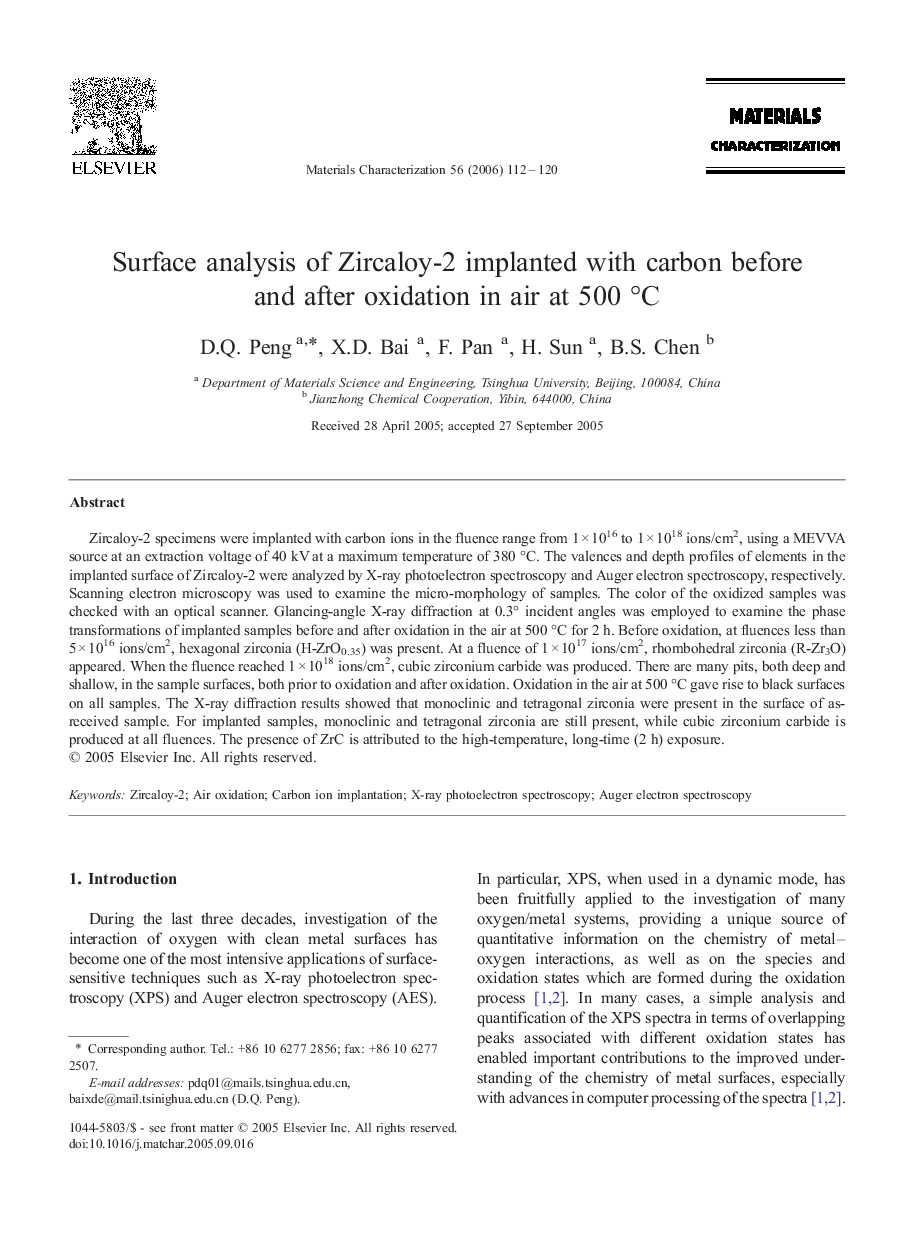| Article ID | Journal | Published Year | Pages | File Type |
|---|---|---|---|---|
| 1572791 | Materials Characterization | 2006 | 9 Pages |
Abstract
Zircaloy-2 specimens were implanted with carbon ions in the fluence range from 1 Ã 1016 to 1 Ã 1018 ions/cm2, using a MEVVA source at an extraction voltage of 40 kV at a maximum temperature of 380 °C. The valences and depth profiles of elements in the implanted surface of Zircaloy-2 were analyzed by X-ray photoelectron spectroscopy and Auger electron spectroscopy, respectively. Scanning electron microscopy was used to examine the micro-morphology of samples. The color of the oxidized samples was checked with an optical scanner. Glancing-angle X-ray diffraction at 0.3° incident angles was employed to examine the phase transformations of implanted samples before and after oxidation in the air at 500 °C for 2 h. Before oxidation, at fluences less than 5 Ã 1016 ions/cm2, hexagonal zirconia (H-ZrO0.35) was present. At a fluence of 1 Ã 1017 ions/cm2, rhombohedral zirconia (R-Zr3O) appeared. When the fluence reached 1 Ã 1018 ions/cm2, cubic zirconium carbide was produced. There are many pits, both deep and shallow, in the sample surfaces, both prior to oxidation and after oxidation. Oxidation in the air at 500 °C gave rise to black surfaces on all samples. The X-ray diffraction results showed that monoclinic and tetragonal zirconia were present in the surface of as-received sample. For implanted samples, monoclinic and tetragonal zirconia are still present, while cubic zirconium carbide is produced at all fluences. The presence of ZrC is attributed to the high-temperature, long-time (2 h) exposure.
Keywords
Related Topics
Physical Sciences and Engineering
Materials Science
Materials Science (General)
Authors
D.Q. Peng, X.D. Bai, F. Pan, H. Sun, B.S. Chen,
